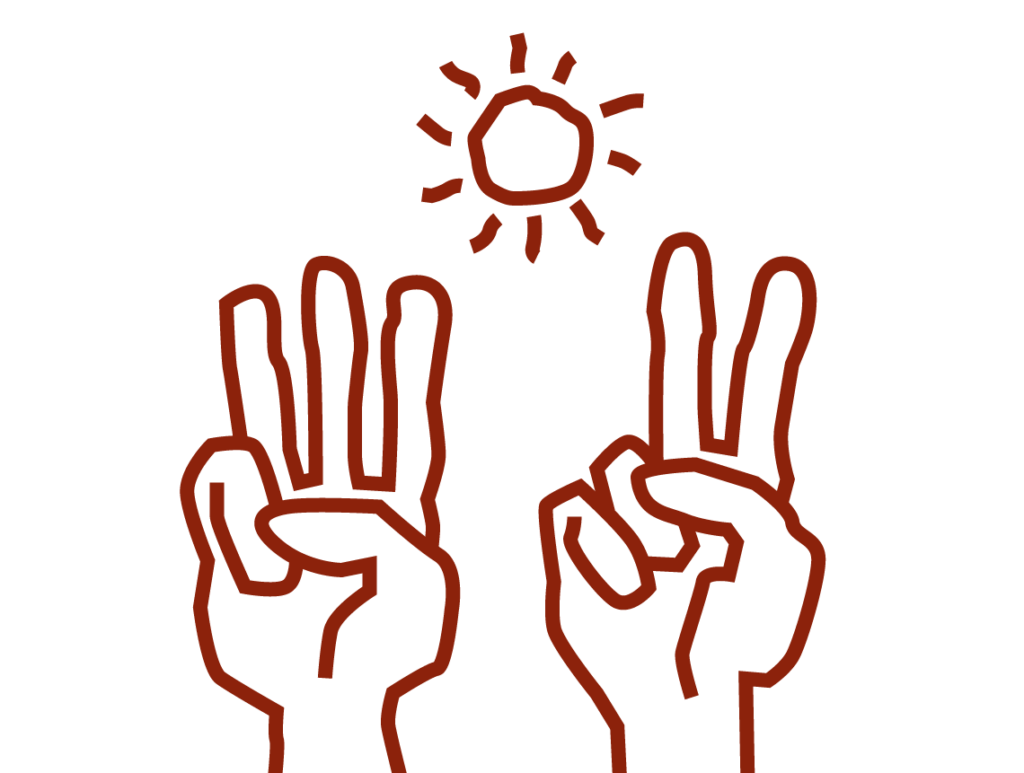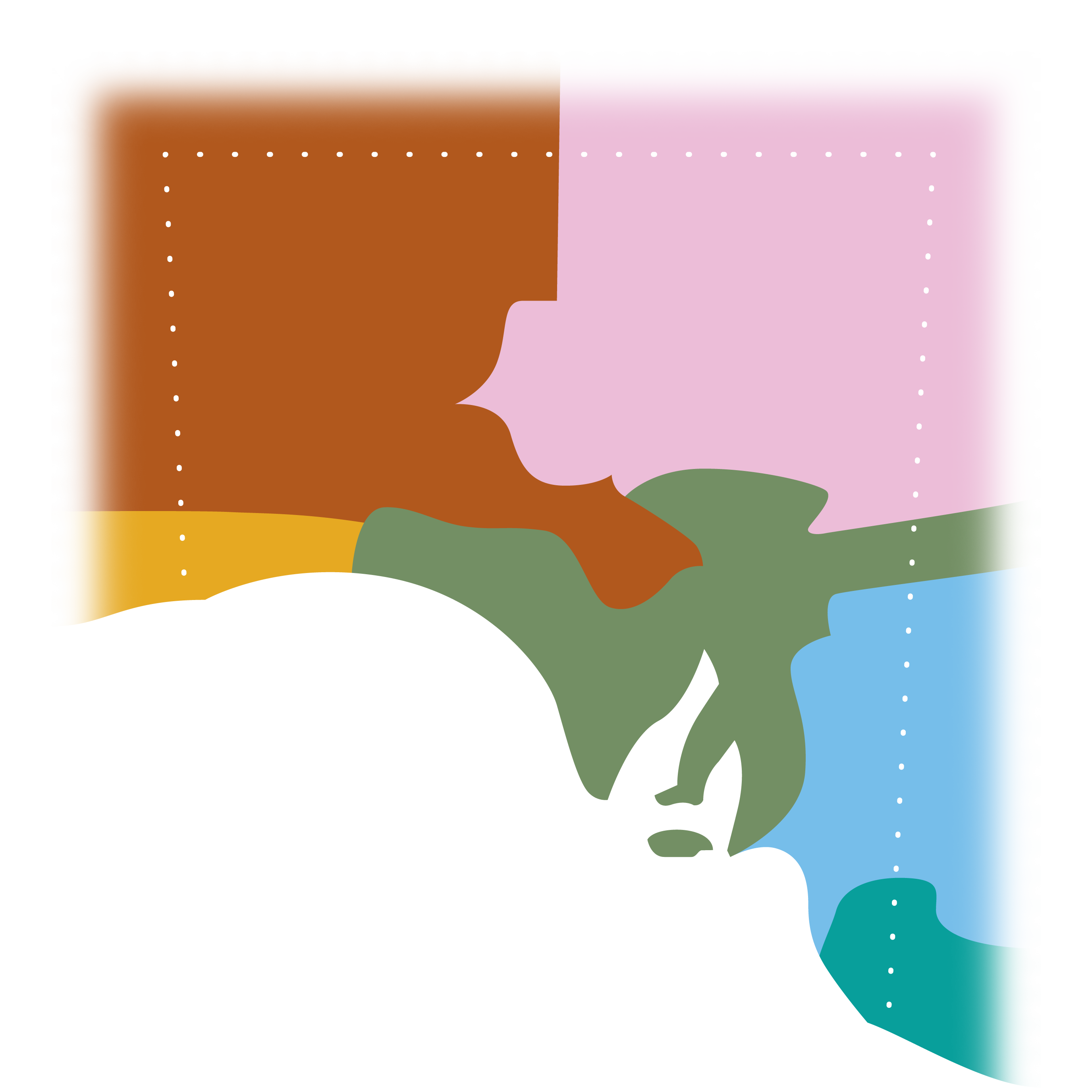
In this lesson we will learn how to talk about colours and numbers in Tanganekald ruminyeri (Tanganekald language). We will also learn some general descriptive words and some sign language.
Colours
To start with, let's learn the colours in Tanganekald ruminyeri.
| mulkali | red | |
| ngamthumelin | yellow | |
| thumelin | green | |
| ringkari | white | |
| kinemin | black, brown |
mulkali means 'red ochre, red substance' which was traditionally used to paint shield decorations, ngamthumelin is a descriptive word which means 'yellow', thumelin is a descriptive word meaning 'green', kinemin is a descriptive word meaning 'black, brown, dark coloured', ringkari is a descriptive word meaning 'white'.
Some colours don't have a specific word in Tanganekald. Instead, you can simply say that something is luk 'like' something else.
| Kinanyi mayinggi luk tupaduwi. | Her clothes are like the sky (blue). | |
| Panmauri tuiyar luk kari. | The dog’s fur is like smoke (grey). | |
| Ngomanyi marki luk milgi. | Your cheeks are like pigweed (pink, purple). |
kinanyi means 'her', mayinggi means 'clothes, belongings', luk means 'like', tupaduwi means 'sky', panmauri means 'dog', tuiyar means 'hair', kari means 'smoke', ngomanyi means 'your', marki means 'cheeks' and milgi means 'pigweed'.
Here are some ways you could use colour words in a sentence.
| Yarru panmauri ngomanyi panmauri? | Which dog is yours? | |
| Ringkari panmauri. | The white dog. | |
| Kinanyi tuiyar kinemin? | Is his hair black? | |
| Kinanyi tuiyar mulkali. | His hair is red. |
yarru means 'which, what', panmauri means 'dog', ngomanyi means 'your', ringkari means 'white', kinanyi means 'his/her', kinemin means 'black', tuiyar means 'hair' and mulkali means 'red'.
Descriptive words
Let's learn some more words for describing things.
| ngankuri | good | |
| katjeri | beautiful, pretty, good looking, cool, deadly, flash, happy | |
| prupi | bad, old, imperfect | |
| nyiningi | very bad | |
| ngarang | big | |
| yuluki | tall, long | |
| purranggi | small, short | |
| yandi | old, worn out, aged | |
| muralapi | small, little, young |
Here are some sentences using these descriptive words.
| Orni meimini katjeri. | That woman is beautiful. | |
| Ya yandi korni. | He is an old man. | |
| Andili ruwi ngankuri, thumelin-ru. | Here the country is good, very green. | |
| Ngapa tau purranggi, ngapa yuluki! | I’m not short, I’m tall! |
orni means 'that', meimini means 'woman', katjeri means 'beautiful', ya means 'he', yandi means 'old', korni means 'man', andili means 'right here', ruwi means 'country', ngankuri means 'good', thumelin means 'green', the ending -ru means 'really, very', ngapa means 'I', tau means 'no', purranggi means 'short' and yuluki means 'tall'.
Numbers
Tanganekald people used sign language alongside the spoken language. These signs would often be used when out hunting, or between people standing a long distance apart from one another. Let's now learn how to count using both spoken language and sign language.
| yam | one | |
| nengkung | two | |
| ngenepal | three | |
| kinggerang | four | |
| turuwar | five | |
| manyampuni | six | |
| yulukudi | seven | |
| kinggerang-kinggerang | eight | |
| turuwar-kinggerang | nine | |
| meili | ten |
kinggerang-kinggerang is 'four-four' which means 'eight' and turuwar-kinggerang is 'five-four' which means 'nine'.
Here are some more general words to use when talking about 'how much' or 'how many' of something there is.
| pekuwilund | many, a great number | |
| ngruwar | lots, many | |
| yamaiyam | some, a few, not many | |
| tau | none |
Here are some ways to use these number words in a sentence.
| Minyai wark natji? | How many crows are there? | |
| Pekuwilund wark natji. | There are a great many crows. | |
| Ngenta yam peleti thulun? | Do you want one egg? | |
| Ngapa nengkung peletengk thulun. | I want two eggs. |
minyai means 'how many', wark means 'crow', natji means 'there', pekuwilund means 'a great many', ngenta means 'you', yam means 'one', peleti means 'egg', thulun means 'wanting', ngapa means 'I', nengkung means 'two' and peletengk means 'eggs [two]'.

